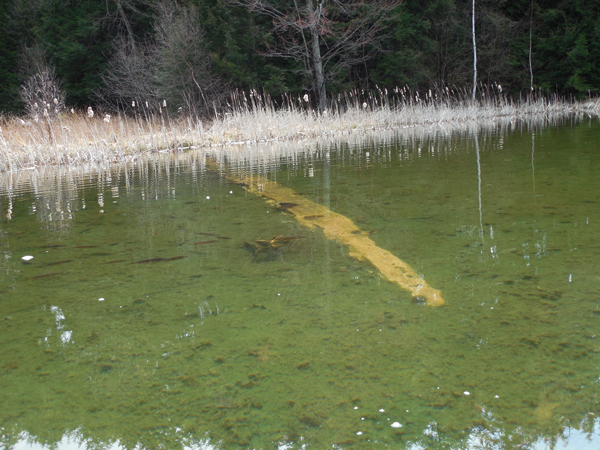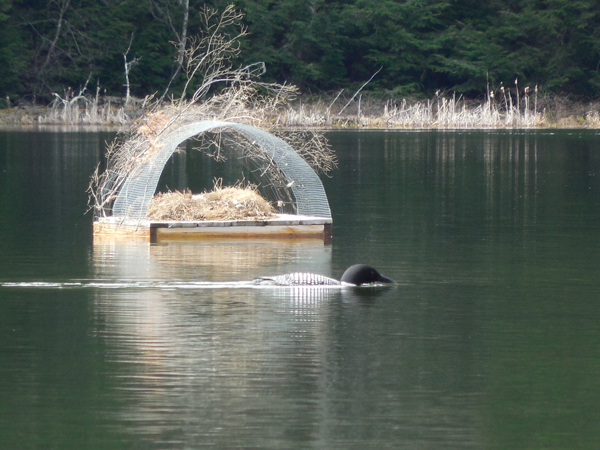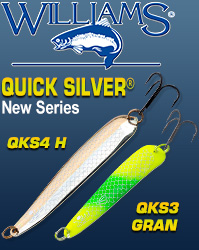Fencerows: Return of the Loons
By John Luthens
I held my breath, lying in the cattails and watching through binoculars as the pair of loons dove around the point and glided into the bay. The nest arched from the water 50 yards in front of me and into a chilly April morning. As the sun cracked the horizon, I thought for a moment they might enter the nest. But the birds upended again, diving, popping back up across the bay in tandem formation, the nest receding in their wake.
Morning arrows of gold shafted through the tall pines as I dusted off cattail fuzz and hiked back up the hemlock ridge. It was a special moment. Within the heart of the Nicolet National Forest, the loons had returned, and the power of northern summer was slowly returning with them. I was poised in a special place.
Flying into northern Oconto County, I’d landed along the safe confines of 62-acre Little Lake Archibald. I hadn’t spent the winter along the Gulf Coast like the loons but, then again, I didn’t have to sleep in the cattails and keep a watchful eye for predators, either. I’d been flagged in by the warm hospitality beacon of my good friends Tom and Sheri Posselt.
Tom and Sheri live in a small cabin perched above the lake. It is a stone-chimney type of place, with a small boathouse and dock. Sheri is an artist and Tom is a consummate sportsman. The place overflows with fine paintings and carvings, set side-by-side with eye-popping deer and fish mounts. It is a cabin built on the foundation of stories, some of which are even true.
Their deck, overlooking an alcove bay of Little Lake Archibald, is perhaps the finest observation point for aquatic wildlife that has ever been created. Imagine standing in the rising morning mist with a steaming cup of coffee, watching otters and loons chase bluegill and bass back and forth like diehard hunters on a deer drive. While the surface ripples with frantically escaping fish, unethical great blue herons soar in and thrust themselves stoically into the middle of the hunt. The water is clear enough to count individual fish in the schools, the biggest ones looking like the shadows of sharks cruising inside a sand reef.
When the call came in telling that the loons had returned, it didn’t take much arm twisting for me to drop what I was doing and head to my friend’s northern paradise. Topping it off, the floating nest was about to set sail.

A fallen giant rests in the crystal waters of Little Lake Archibald.

A loon inspects the waters in front of the floating nest.
Tom and Sheri undertake the rite of anchoring a small, man-made nest in the shelter of the bay. The nest is constructed of treated, floating wood, and is lined with mud and grass. Wire caging over the top is decked in a brushy camouflage to protect hatchlings from the watchful eye of eagles and hawks. The Little Archibald Lake Association has sponsored the nest since 1997, when the first two chicks were hatched from the platform. Since then, according to the Lake Association, loons have successfully used the nest to hatch their brood at least seven times.
The lake is open to only non-motorized watercraft, the water is gin clear and tested annually, and its depth structure(60 feet at the deepest), boasts a healthy populations of panfish, perch and bass; all highly conducive to loons, who feed by sight and are far more comfortable without heavy boat traffic. The nesting bay is far enough removed to be out the way of electric trolling motors and canoes, and the Lake Association runs a word-of-mouth information network to let boaters know when the loons have occupied the nest.
The shoreline fauna of Little Archibald is wild enough to harbor natural nesting grounds, but the artificial nest provides shelter from land predators such as raccoon and fox. It also offers a flood insurance of sorts, protecting from early summer rains that can drive water levels into the nesting ground.
While larger lakes in Wisconsin may harbor more than one nesting pair, Little Archibald typically plays host to a single family. By nature, loons are territorial, tending not to mix well with their own kind, especially during the nesting season which typically starts in early May and runs into June, when the first chicks hatch. I did occasionally spot a third loon flying across the surface, but the reception given to the straggler by the nesting pair was colder than the April water.
I watched Little Lake Archibald come to life, gliding the lake shore in a kayak commandeered from the Posselt’s boathouse. The water was clear enough to count the knotty rings on fallen hemlocks buried in the silt below. Mallard and teal scoured the shoreline in their annual rites of spring, while geese bombed the surface looking for their own slice of the nesting pie. Every such lake has its own character, and the annual sights of spring never grow old.
When it was time for me to depart, the nest was still unoccupied, but I watched from my kayak perch as the pair began feeding in ever-increasing proximity to the floating hatchery. Tom and Sheri will let me know if it happens. And when the haunting, summer-night call of a new family echoes across the bay, I’ll fly back to Oconto County to hear it for myself.
.









